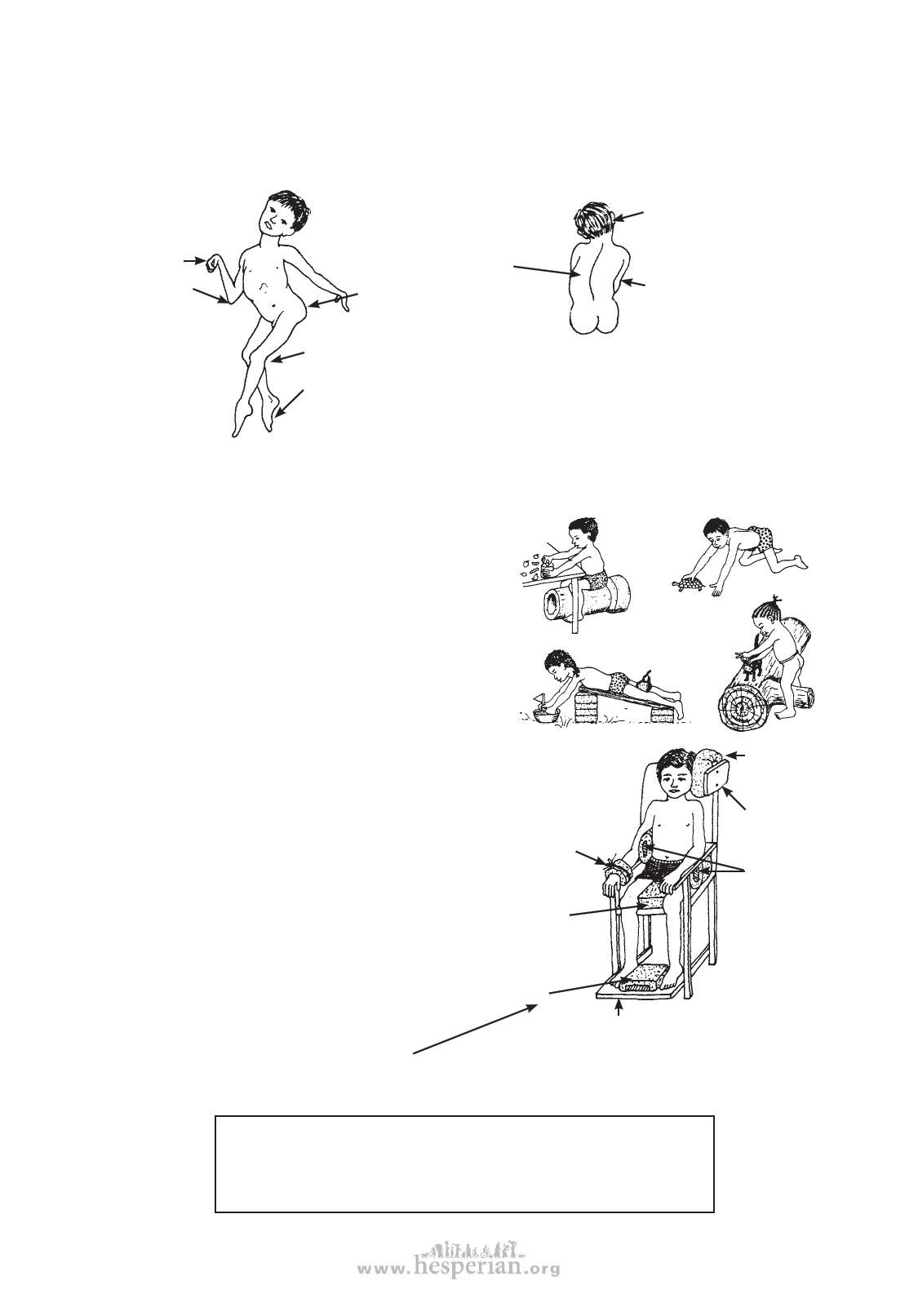
CEREBRAL PALSY
HELPING THE CHILD ACHIEVE BETTER POSITIONS
Due to abnormal pull of muscles, children with cerebral palsy often spend a lot of
time in abnormal positions. These abnormal positions of the limbs and body should be
avoided as much as possible, or the child can become deformed. For example.
95
A wrist or
elbow that is
always bent
can lead to
contractures
(muscle
shortening)
that make it
impossible to
straighten the
arm or hand.
A twisted position
can lead to curvature
of the spine and
tilting of the hips.
Hips that are
continually bent
forward, or to one side,
or knees that are always held together,
or never completely straightened,
or feet that are always tiptoe’, can lead to
contractures that prevent the normal range of
movement. This can make washing, dressing,
toileting, and moving about much more difficult.
If the head is always turned
or bent to one side, in
time the neck may become
permanently twisted.
An arm that is held tightly
to the side will in time
become difficult to raise
away from the side.
Whenever possible the child should be in positions that prevent rather than cause
these problems. Whatever the child is doing (lying, sitting, crawling, standing) try to
encourage positions so that:
• her head is straight up and down.
• her body is straight (not bent,
sitting
crawling
bowed, or twisted).
• both arms are straight and kept
away from the sides.
• both hands are in use, in front of her
standing
eyes.
• she bears weight equally on both
lying
sides of her body—through both
hips, both knees, both feet or both
arms.
Encourage positions that the child can
manage at her stage of development.
Play with her, talk with her, give her
interesting things to do in these positions.
Not all children will be able to stay in
these positions without some kind of
support. Special chairs, tables, wedges,
pads, or bags of clean sand may be
needed to keep a good position.
sandbag to
help keep
arm straight
and quiet
padded
block
between
knees and
between
feet to
hold them
apart
pad to
keep head
from tilting
board to
hold
pad
padded
blocks
carefully
placed
to keep
body from
bending
sideways
For example, the child at the top of
the page might need a chair like this.
footrest to prevent tiptoeing
Note: Remove straps and supports as soon as
the child is able to stay in a good position.
WARNING: Do not leave a child in any one position for many hours as his body
may gradually stiffen into that position. Change his position often. Or better,
encourage him to change it. If he can change his own position effectively, then
chairs, seats, and other aids must not prevent him from moving.
AIDS SHOULD RESTRICT A CHILD’S MOVEMENT AS LITTLE AS POSSIBLE.
disabled village children